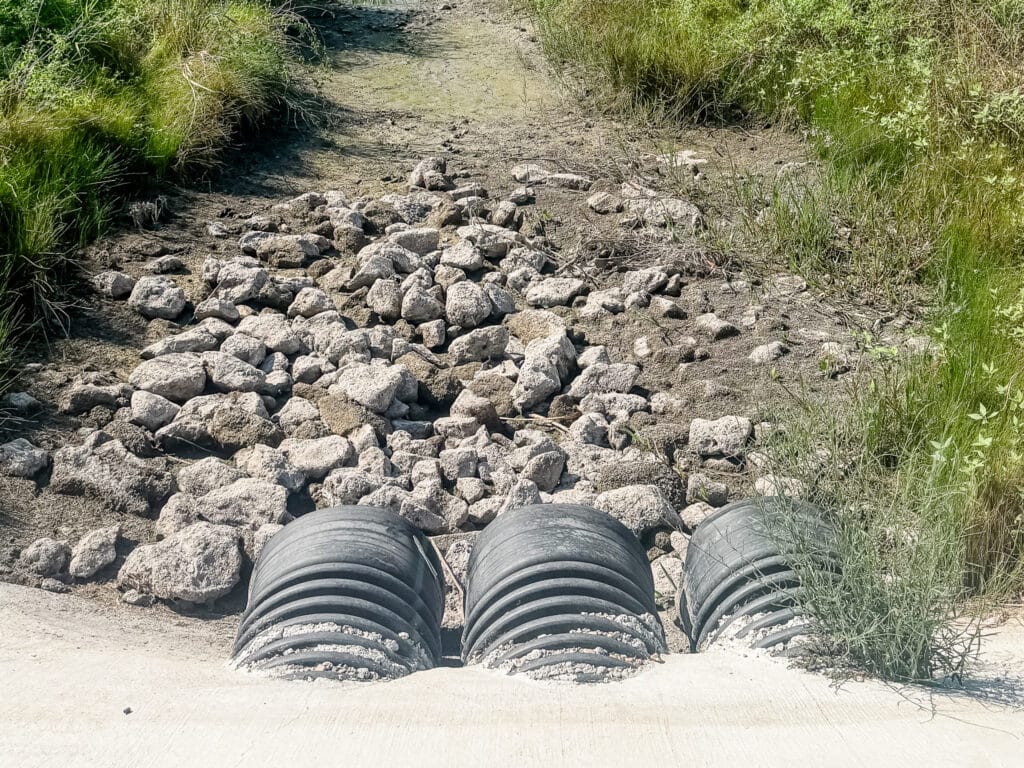
A Comprehensive Guide for Central Texas
Effective stormwater management is critical for communities in Central Texas, where heavy rains and rapid development create unique challenges. Implementing a robust Inspection, Maintenance, Repair, and Retrofit (IMRR) plan is essential for preserving the functionality and compliance of stormwater management facilities. Here’s what you need to know about developing and executing an IMRR plan tailored for Central Texas.
Why IMRR Plans Matter
Proper stormwater management facilities, such as detention ponds, water quality ponds, and storm drains, play a crucial role in controlling flooding, reducing erosion, and protecting water quality. Regular inspections, maintenance, timely repairs, and necessary retrofits ensure these facilities perform effectively and comply with local regulations, particularly those set by the Texas Commission on Environmental Quality (TCEQ).
Key Components of an Effective IMRR Plan
1. Inspection
Regular inspections are the foundation of any effective IMRR plan. Inspections should include:
- Visual checks for sediment accumulation, structural damage, and vegetation overgrowth.
- Verification of proper drainage and outflow structures.
- Identifying signs of erosion or blockages.
2. Maintenance
Scheduled maintenance is vital to the longevity and effectiveness of stormwater management facilities. Maintenance tasks include:
- Sediment removal to maintain storage capacity and water quality.
- Vegetation management, including mowing, trimming, and invasive species control.
- Cleaning and unclogging of drains, filters, and outflow structures.
3. Repairs
Prompt repairs minimize long-term costs and reduce environmental risks. Typical repairs might involve:
- Fixing erosion damage and reinforcing slopes.
- Repairing structural components like pipes, inlets, and outlet structures.
- Replacing failed filtration systems or damaged liners.
4. Retrofit
As communities evolve, stormwater systems may require retrofits to meet new environmental standards or increased runoff from additional development. Retrofit actions include:
- Upgrading existing structures to enhance water quality performance.
- Expanding facility capacity to handle increased runoff volumes.
- Introducing new technologies or materials that enhance sustainability and efficiency.
Regulatory Compliance in Central Texas
Compliance with municipal codes and TCEQ regulations is mandatory. Regular documentation of all IMRR activities—inspection reports, maintenance records, and repair logs—is required to demonstrate compliance. BPI Partners specializes in navigating these regulatory frameworks, ensuring that your IMRR plan aligns with local, state, and federal regulations.
Benefits of an IMRR Plan with BPI Partners
Partnering with experienced professionals like BPI Partners provides several advantages:
- Expert assessments and proactive planning to prevent costly emergencies.
- Tailored IMRR plans that match the unique conditions of Central Texas.
- Long-term cost savings through efficient resource allocation and preventative maintenance.
- Assurance of compliance with regulatory standards, avoiding fines and legal complications.
Let BPI Partners Support Your Stormwater Facilities
An effective IMRR plan is an investment in your community’s safety, environmental stewardship, and financial prudence. BPI Partners offers comprehensive inspection, maintenance, repair, and retrofit services designed specifically for Central Texas communities.
To ensure your stormwater facilities stay compliant and effective, contact BPI Partners today at (512) 288-5522 or visit our website to schedule a consultation and learn more about developing a robust IMRR plan tailored to your needs.
Frequently Asked Questions about IMRR Plans
What is an IMRR plan in stormwater management?
An IMRR plan stands for Inspection, Maintenance, Repair, and Retrofit. It’s a structured approach to keeping stormwater facilities—like detention ponds, water quality ponds, and storm drains—fully functional, compliant with TCEQ regulations, and prepared for heavy rainfall events common in Central Texas.
Why are stormwater inspections important in Central Texas?
Frequent heavy rains, clay-heavy soils, and rapid development in Central Texas make inspections vital. Regular inspections catch sediment buildup, clogged drains, erosion, and structural damage early—before they become major compliance or flooding issues.
What kind of maintenance do stormwater ponds need?
Maintenance tasks include removing sediment, mowing and trimming vegetation, unclogging outflows, and controlling invasive plants. These steps preserve storage capacity, improve water quality, and reduce erosion risks.
How do repairs keep stormwater facilities compliant?
Timely repairs, such as fixing eroded slopes, replacing damaged pipes, or reinforcing outlet structures, reduce long-term costs while ensuring stormwater systems meet TCEQ standards and avoid penalties.
When is a retrofit necessary for stormwater systems?
Retrofits are needed when development increases runoff or when new environmental standards are introduced. Examples include expanding pond capacity, adding filtration, or upgrading with sustainable technology to meet modern performance requirements.
What are the TCEQ requirements for stormwater facilities?
The Texas Commission on Environmental Quality (TCEQ) requires stormwater facilities to be inspected, maintained, and documented regularly. Property owners must keep detailed records of inspections, maintenance, and repairs to prove compliance.
What happens if stormwater facilities aren’t maintained?
Neglecting IMRR responsibilities can lead to flooding, erosion, water quality violations, and expensive emergency repairs. Non-compliance with TCEQ regulations can also result in fines and legal consequences.
How does BPI Partners support IMRR plans?
BPI Partners provides expert inspections, tailored maintenance schedules, and professional repairs. They also design retrofits to extend facility performance while ensuring full compliance with TCEQ and municipal regulations across Central Texas.
